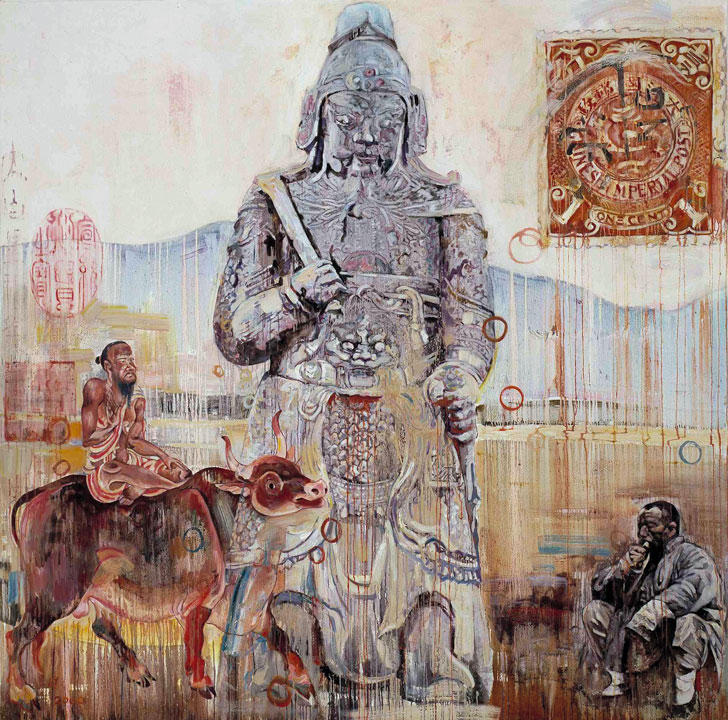Acquisition: Hung Liu, "Post-Age", 2000

Hung Liu
Post-Age, 2000
oil on canvas
overall: 203.2 x 203.2 cm (80 x 80 in.)
National Gallery of Art
Gift of Marsha Garces Williams
2023.78.1
The National Gallery of Art has acquired Post-Age (2000), its first painting by Hung Liu (1948–2021), the groundbreaking contemporary artist known for powerful paintings that center the lives of marginalized and forgotten people, including laborers, comfort women, and refugees. Her work is based primarily on historical Chinese photographs that she found in archives.
Born in Changchun, China, in 1948, Hung Liu came of age under the communist regime of Mao Zedong and was profoundly impacted by the Cultural Revolution. Throughout her official art education in China, she was instructed to paint within the socialist realist style, which would remain influential to her practice for many years to come. After numerous attempts to come to the United States, Liu was granted a passport in 1984 and enrolled in the MFA program at University of California, San Diego, where she studied under Allan Kaprow, the American originator of Happenings. Liu would come to refer to her work as a reaction against, and a transformation of, socialist realism, as she explored the resonance between past events and the present. Keeping pictures of the past was forbidden during the Cultural Revolution and her family burned a lot of theirs, which made Liu value photographs even more. Drawing inspiration from family and historic photographs, her works monumentalize her marginalized subjects as she summons the ghosts of history, turning old photographs into new paintings. Liu’s distinctive style features washes of linseed oil that give her works a weeping-like appearance—this element, along with the abstract passages in her paintings, calls into question the veracity of photographic images and historical records.
Post-Age exemplifies Liu’s practice of sourcing imagery from historical archives and personal photographs, offering a poignant yet deeply caring response to the current moment. Derived from a 19th-century postcard depicting the Imperial Ming Tombs near Beijing, China, Post-Age features a monumental stone warrior amidst historic iconography, including a resting peasant and the esteemed philosopher Lao Zi. The postage stamp reproduced in the upper right corner is a likely reference to the Qing dynasty, which established modern postal services in China (the last emperor would abdicate after the Republic of China was declared in 1912). Liu’s distinctive technique of painted circles, washes, and drips transcends these sources, inviting us to explore the complexities of history, memory, and identity.
Liu’s untimely death raised awareness of her contributions and stature as a professor and beloved mentor. She taught at Mills College in Oakland, California, from 1990 until 2014.
Through its profound reflections on migration, memory, home, erasure, and identity, this painting opens new narratives as it broadens those contained within the National Gallery’s collection.
Contact Information
General Information
For additional press information please call or send inquiries to:
Department of Communications
National Gallery of Art
2000 South Club Drive
Landover, MD 20785
phone: (202) 842-6353
e-mail: [email protected]
Newsletters
The National Gallery also offers a broad range of newsletters for various interests. Follow this link to view the complete list.